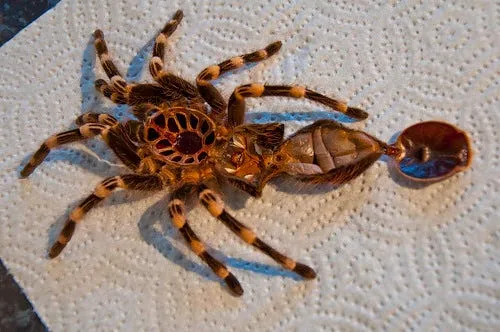Tarantula Spiderling Molting Top 5 Facts
Raising a tarantula spiderling is a fascinating experience, and understanding the process of molting is crucial for their care and well-being. Molting, the shedding of their exoskeleton, is a fundamental aspect of their growth and development. As these young arachnids grow, they outgrow their outer shell and must shed it to continue their development. This article will explore 5 key facts about the molting process in tarantula spiderlings, offering valuable insights for tarantula enthusiasts and pet owners. This guide will help you understand what to expect during this critical life stage, ensuring you can provide the best possible care for your tiny, eight-legged companion.
What is Molting in Tarantula Spiderlings
Molting is a natural and essential process for all tarantulas, especially during their spiderling phase. It’s essentially the process of shedding their exoskeleton, the hard outer shell that protects their body. Unlike humans and other vertebrates that have internal skeletons, tarantulas and other arthropods have an exoskeleton, providing protection and support. As the tarantula grows, this exoskeleton becomes too small, and molting becomes necessary for them to grow. The new exoskeleton is soft and vulnerable for a period after the molt, making the tarantula spiderling susceptible to injury. Understanding molting is key to providing the appropriate care, including maintaining the right humidity and avoiding disturbances during this time.
The Molting Process Explained
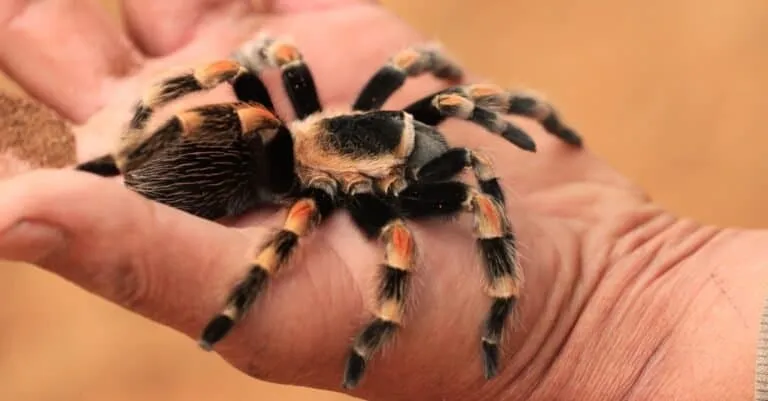
The molting process is a complex and energy-intensive event. It begins with the formation of a new, softer exoskeleton beneath the old one. The spiderling then absorbs fluids, causing its body to swell and split the old exoskeleton, usually along the carapace (the top part of the cephalothorax) and the abdomen. Once the split occurs, the tarantula slowly wriggles out of its old shell, leaving behind a perfect replica of itself. The newly molted tarantula is significantly more vulnerable, as its new exoskeleton is soft and hasn’t fully hardened. It will remain in this vulnerable state for several days or weeks, depending on the species and environmental conditions. During this time, it’s crucial to avoid any disturbance or stress.
Why Do Tarantulas Molt
Tarantulas molt primarily to grow. Their exoskeleton is a non-living structure and cannot expand to accommodate their increasing size. Therefore, molting allows the tarantula to shed this restrictive shell and emerge larger. In addition to growth, molting also serves other purposes. It allows the tarantula to regenerate lost limbs, replace internal structures such as the lining of the digestive tract, and rid itself of parasites or other unwanted organisms. Each molt is a renewal, a reset, allowing the spiderling to rejuvenate and prepare for the next stage of its life. The frequency and timing of molting vary significantly, depending on factors like age, feeding habits, and the overall health of the tarantula spiderling.
How Often Do Tarantula Spiderlings Molt
The molting frequency in tarantula spiderlings is much higher than in adults. Spiderlings can molt anywhere from once a month to several times a year, depending on their species, age, and environmental conditions. Rapid growth phases result in more frequent molts. As they mature, the molting frequency decreases. Adult tarantulas typically molt once a year or even less frequently. The rate at which they molt is a key indicator of their health and well-being. Observing these patterns is essential for providing proper care and anticipating the needs of your tarantula spiderling.
Factors Influencing Molting Frequency
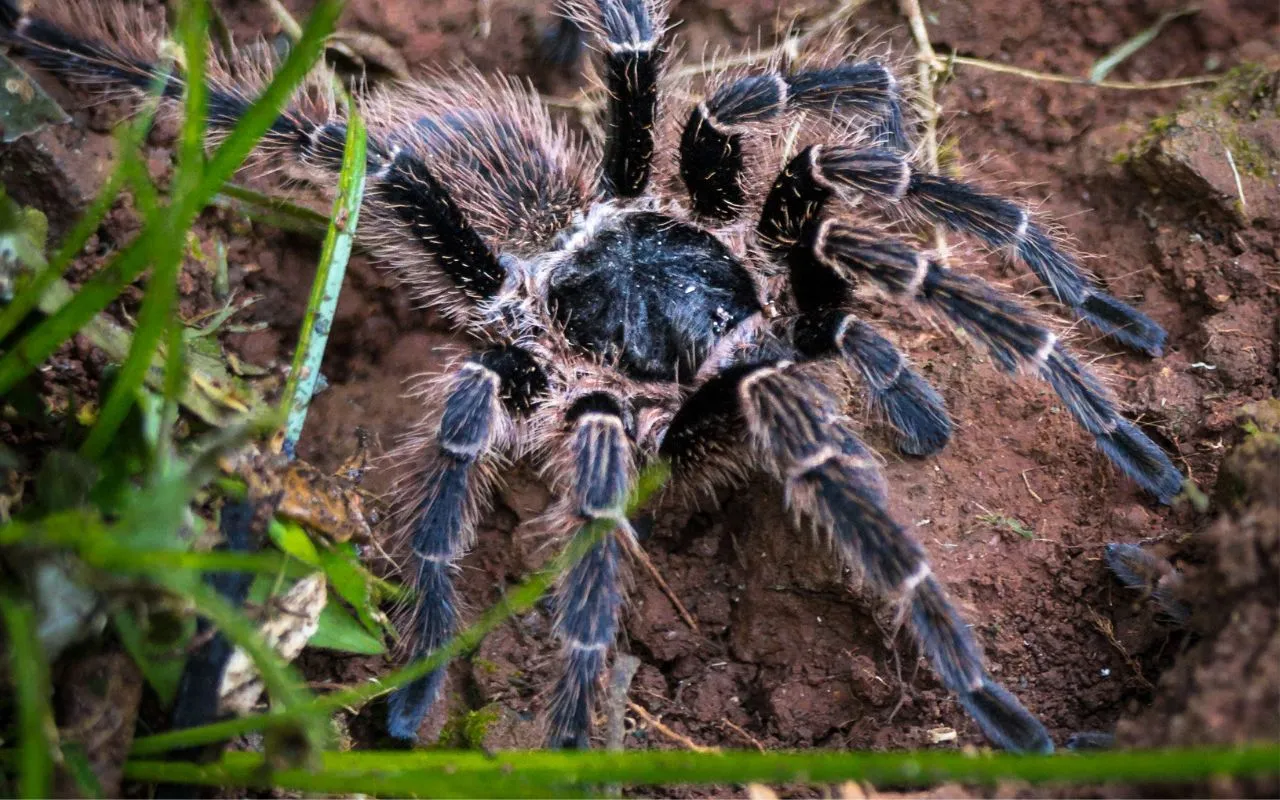
Several factors affect how often a tarantula spiderling molts. These include the spiderling’s age, the amount of food it consumes, and the environmental conditions it lives in. By understanding these influences, you can better anticipate and manage your tarantula’s molting cycles.
Age and Growth Rate
Younger spiderlings molt more frequently than older ones because they are actively growing. As they age, their growth rate slows down, and so does the frequency of molting. The rapid growth phases of spiderlings require more frequent molts to accommodate their increasing size and development. The age of the spiderling is a primary factor in determining the molting schedule, with younger specimens molting several times a year and older ones less frequently.
Feeding and Nutrition
Adequate nutrition is crucial for healthy molting. A well-fed tarantula spiderling that is receiving a balanced diet will molt more frequently than one that is underfed. Regular access to appropriate-sized prey items ensures the spiderling has the necessary resources to develop a new exoskeleton. Overfeeding can lead to faster growth and potentially more frequent molts. The type of food also matters; a diet rich in nutrients will support the molting process, leading to healthier and more frequent molts, especially during the spiderling phase.
Environmental Conditions
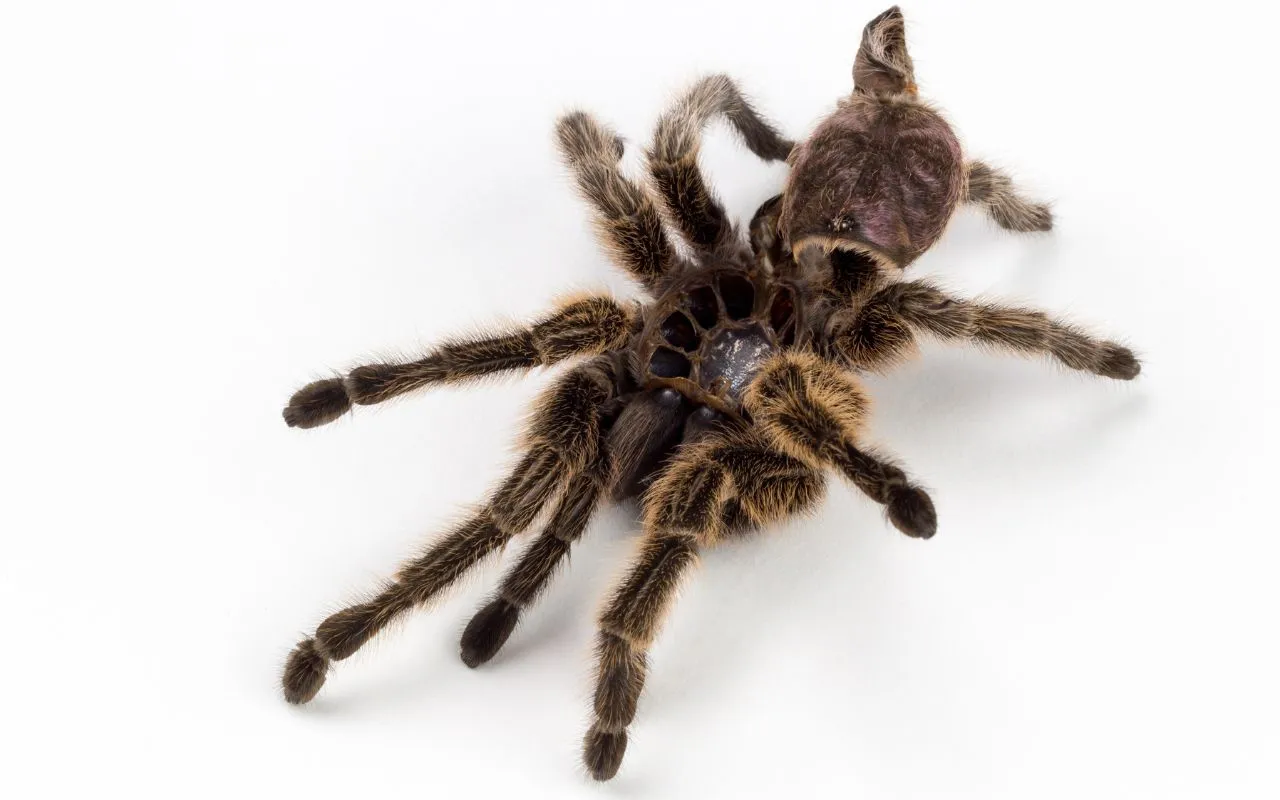
Optimal environmental conditions, such as proper temperature and humidity, are essential for successful molting. Improper conditions can stress the spiderling and disrupt the molting process. High humidity helps the spiderling to shed its old exoskeleton, while appropriate temperature ensures its metabolism functions correctly. Changes in these conditions may sometimes trigger a molt or, conversely, make the process more difficult. Maintaining the right environment is, therefore, essential to ensure the spiderling is healthy and able to molt without complications. Providing the right environment is vital for facilitating successful molts and maintaining overall health.
Signs Your Tarantula Spiderling Is About to Molt
Recognizing the signs that your tarantula spiderling is about to molt can help you provide the right care and minimize disturbances. Several behavioral and physical changes indicate the impending molt, allowing you to prepare and reduce any potential stress for the spiderling. Being observant and attentive during this stage is key to supporting the spiderling’s health and well-being. Knowing the signs will allow you to make any necessary adjustments to ensure a successful molt.
Behavioral Changes
One of the most noticeable signs is a change in behavior. The spiderling may become less active, spending more time in its burrow or hiding spot. It might also refuse to eat for a few days or weeks before the molt, indicating that its metabolism is shifting. Some spiderlings may construct a web mat or block off their burrow entrances in preparation. These changes in behavior usually precede the molting process, indicating it is time to reduce disturbance and maintain optimal environmental conditions. These behavior shifts are your first sign.
Physical Changes
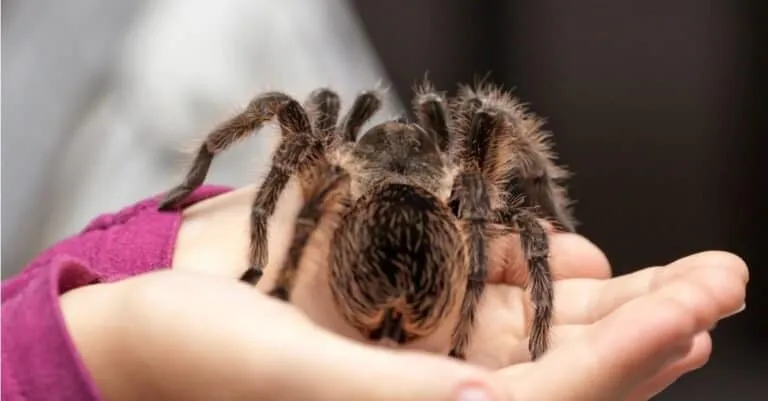
Physical changes also indicate an upcoming molt. You might notice a darkening of the abdomen, as the new exoskeleton forms beneath the old one. The spiderling’s abdomen might also appear swollen. The old exoskeleton may appear dull or faded. The spiderling’s fangs might be a different color, as the new fangs are forming. These changes are clear indications that the tarantula is preparing to shed its exoskeleton. The spiderling will become more fragile. Be sure to be careful to not disturb the tarantula spiderling during this stage.
Post-Molting Care for Tarantula Spiderlings
After molting, a tarantula spiderling is incredibly vulnerable. Proper care during this period is crucial for its survival and well-being. This includes maintaining appropriate humidity levels, offering food, and observing your tarantula without disturbing it. Patience and care during this time are critical to ensuring your tarantula recovers and grows safely.
Providing Proper Humidity
Maintaining the correct humidity levels is essential to help the new exoskeleton harden properly. After molting, the exoskeleton is soft and needs the right amount of moisture to firm up. Provide a moist substrate and ensure proper ventilation to prevent mold. The specific humidity requirements will vary based on the tarantula species, so research the needs of your particular spiderling. High humidity helps the new exoskeleton harden evenly. Ensure there is adequate ventilation to prevent mold growth.
Offering Food
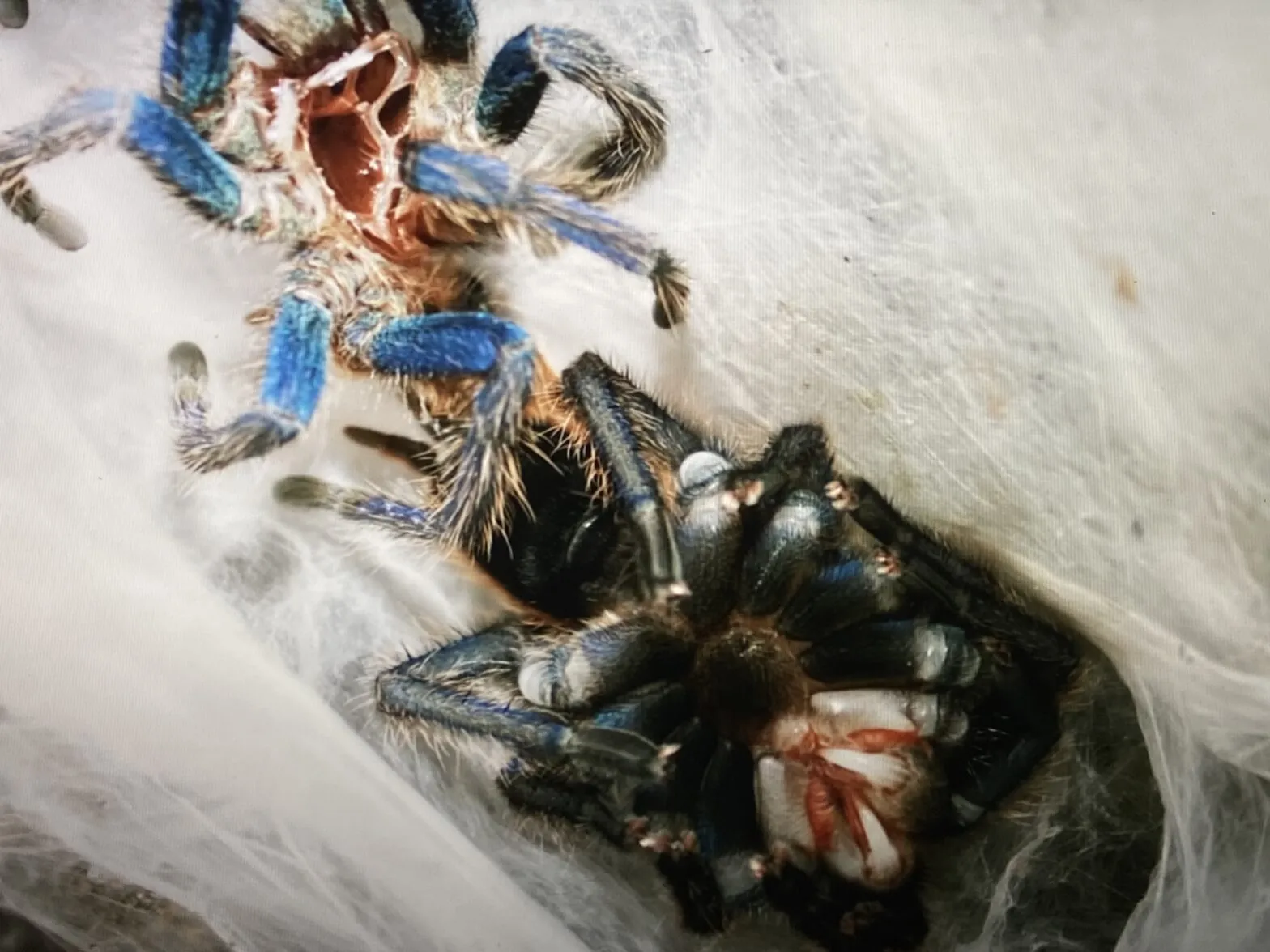
Once the fangs and exoskeleton have hardened, usually a week or two after the molt, you can offer food. Start with appropriately sized prey items and observe whether the spiderling is ready to eat. Avoid overfeeding, and remove any uneaten food within a reasonable time to prevent stress. Offering food is a sign of a successful molt. Monitor the tarantula’s feeding response carefully, as they will be hungry after this period.
Handling and Observation
Avoid handling your tarantula spiderling for a week or two after molting. The new exoskeleton is still hardening, and the spiderling is fragile. Observe the spiderling’s behavior and watch for any signs of stress. Provide a safe and undisturbed environment during this crucial time. Regular observation helps you to monitor the tarantula’s progress and ensure that it is recovering well. Keep the environment calm and avoid sudden movements near the enclosure.
